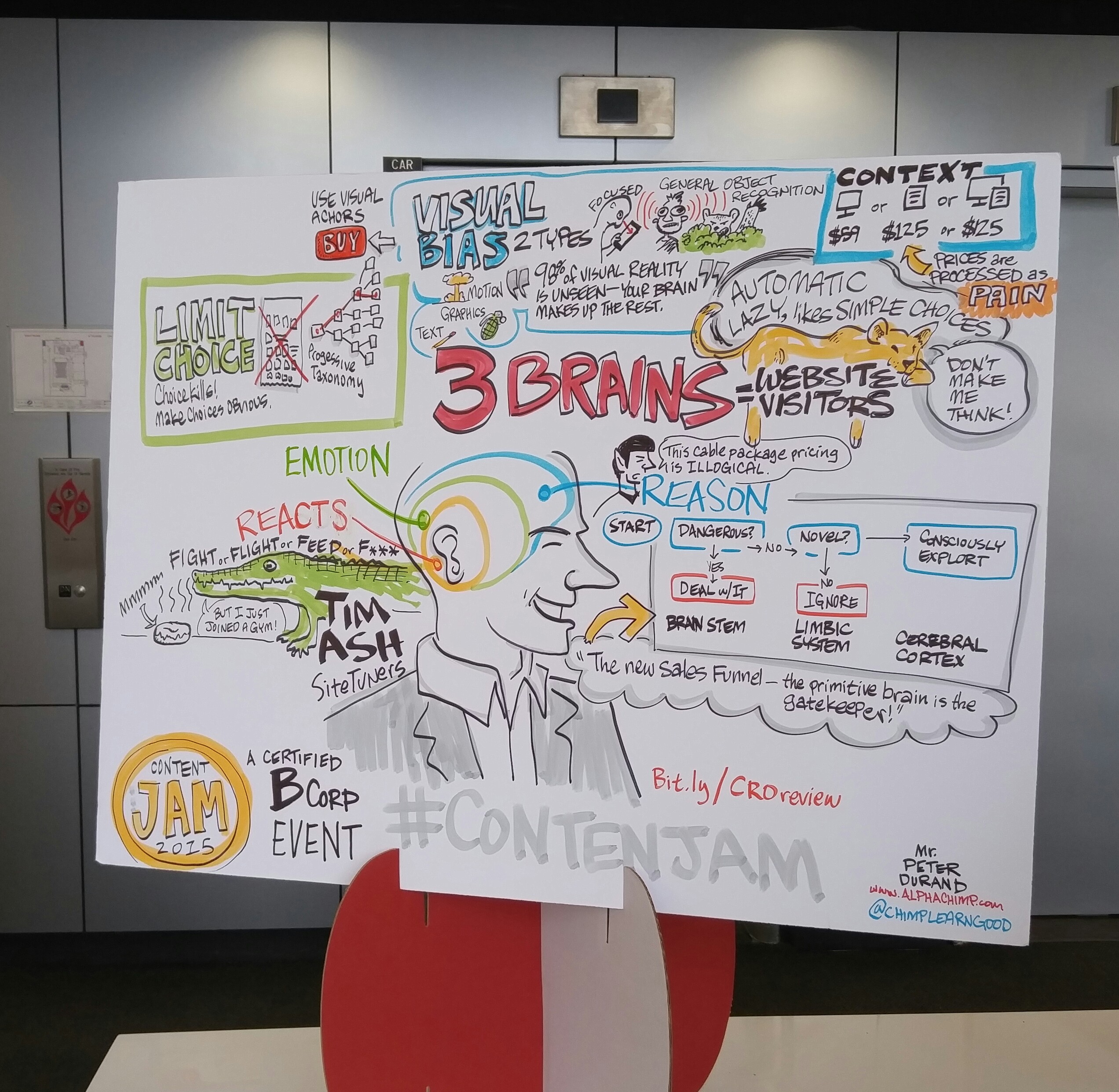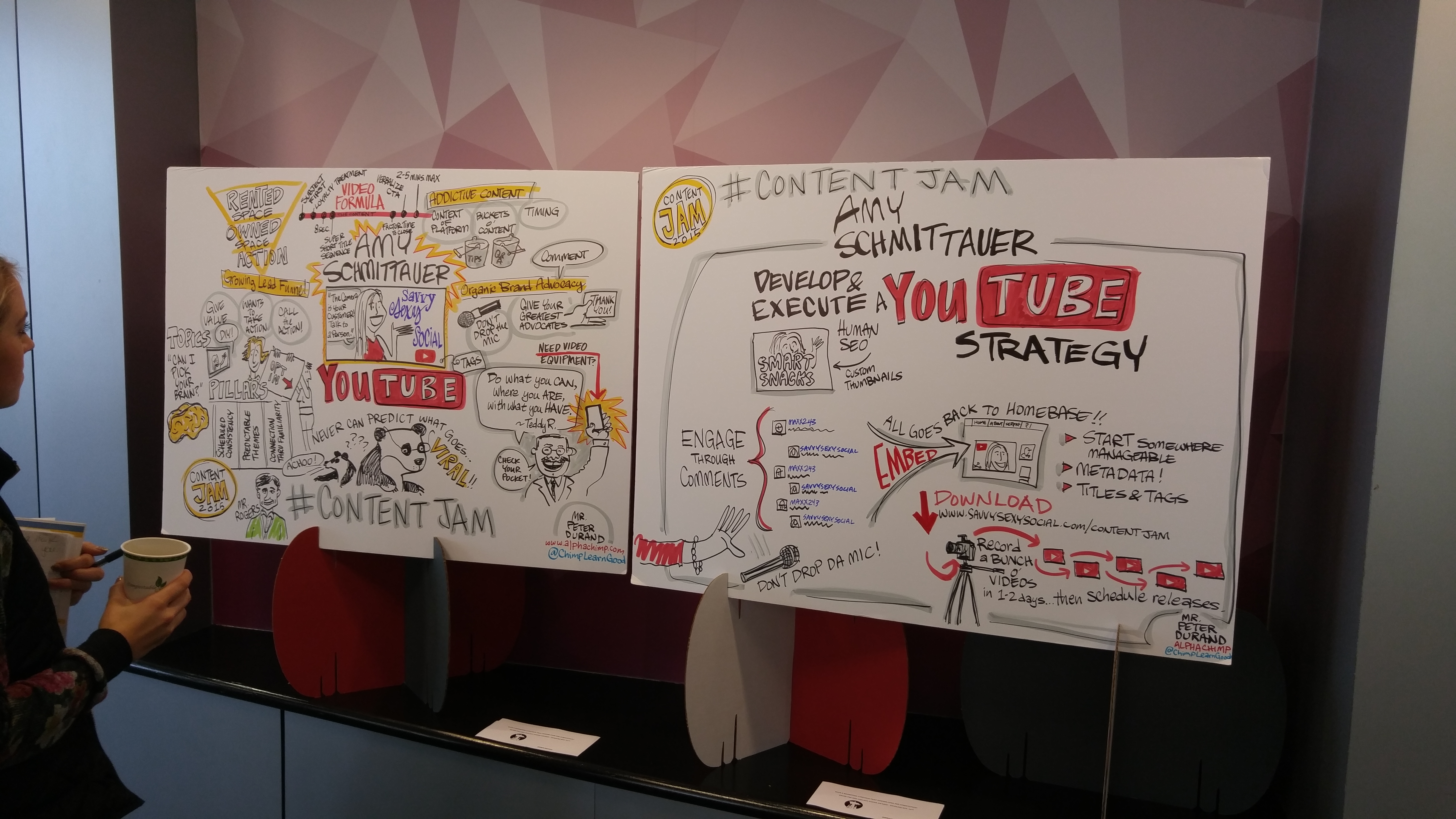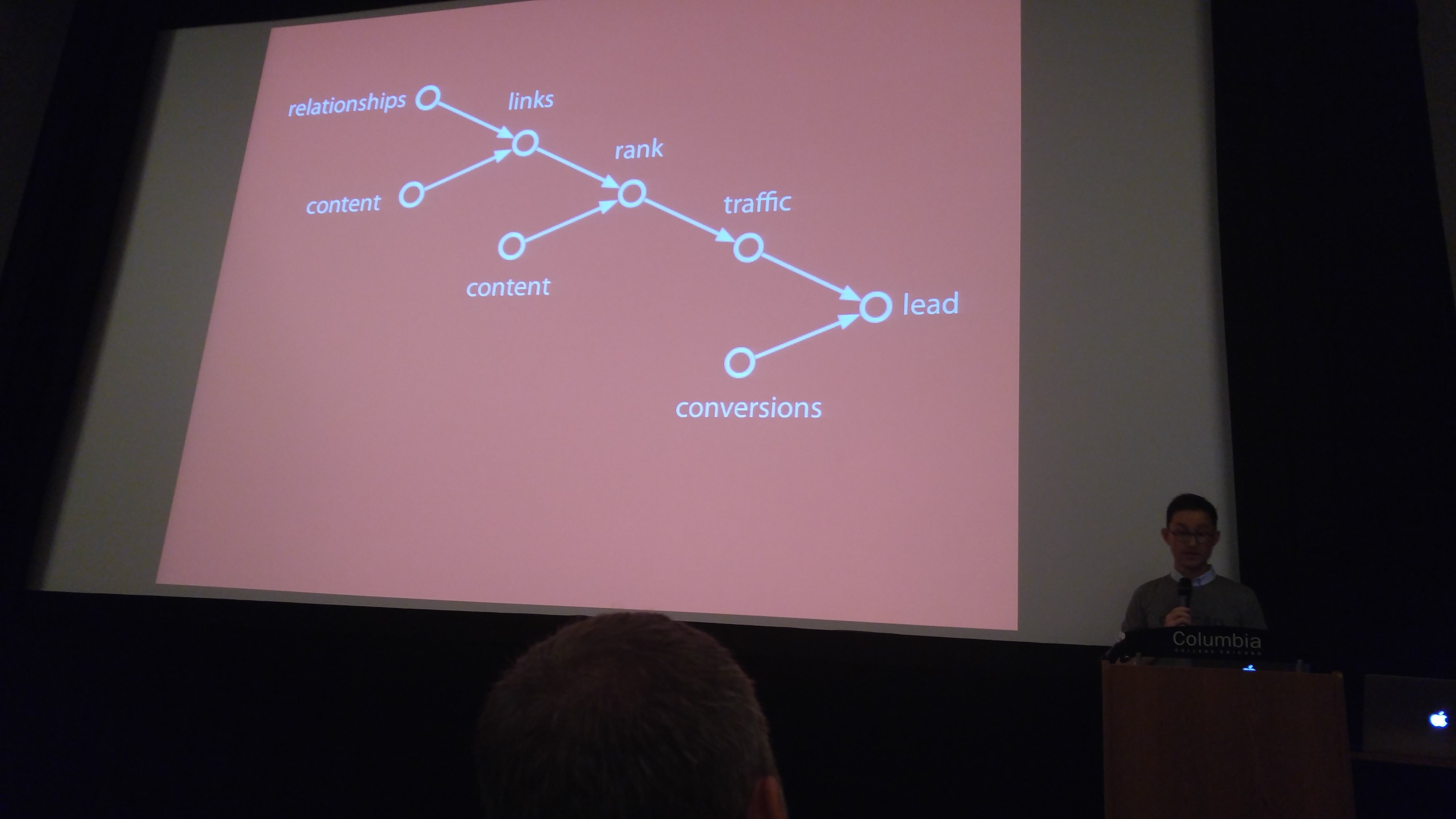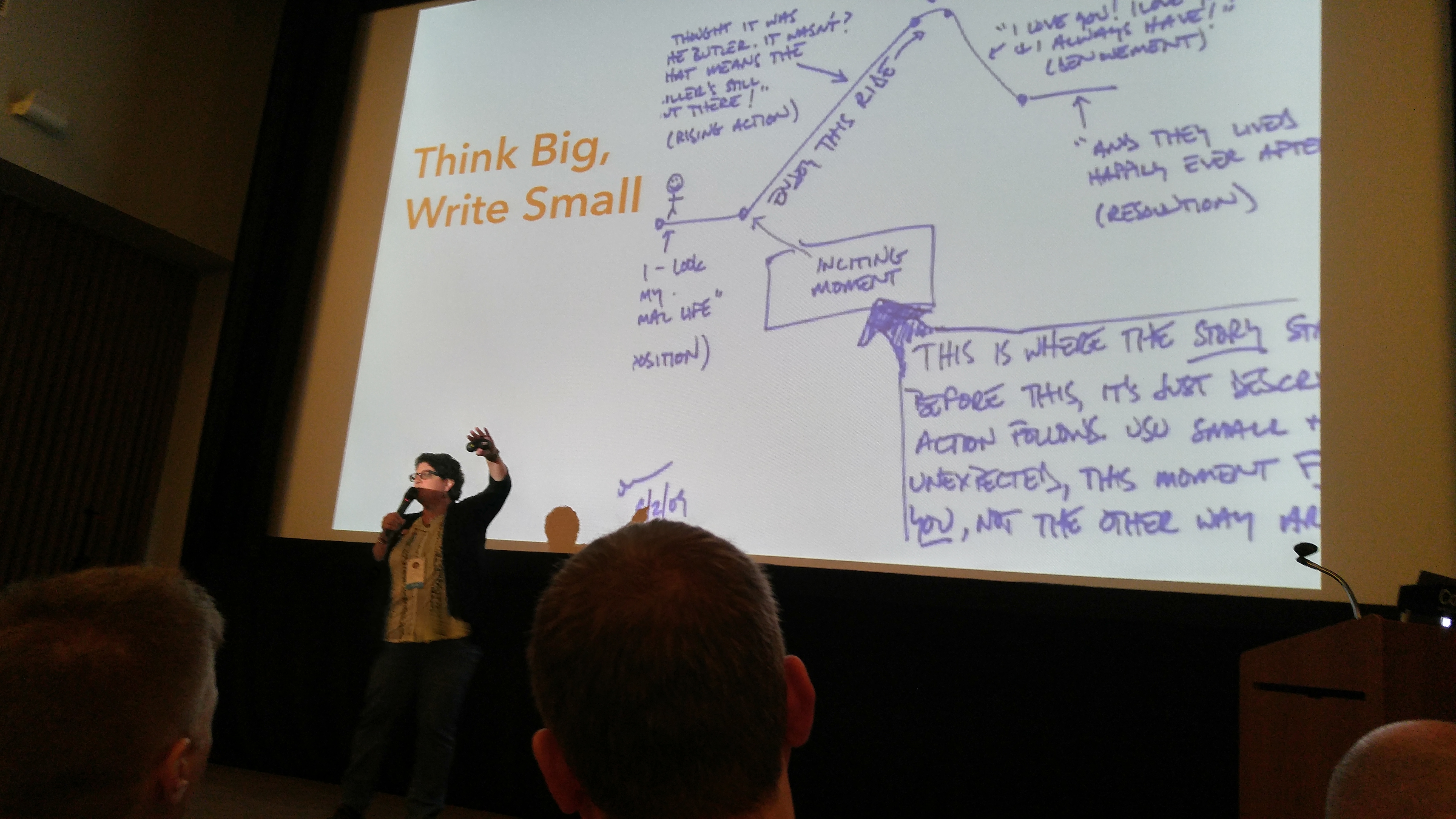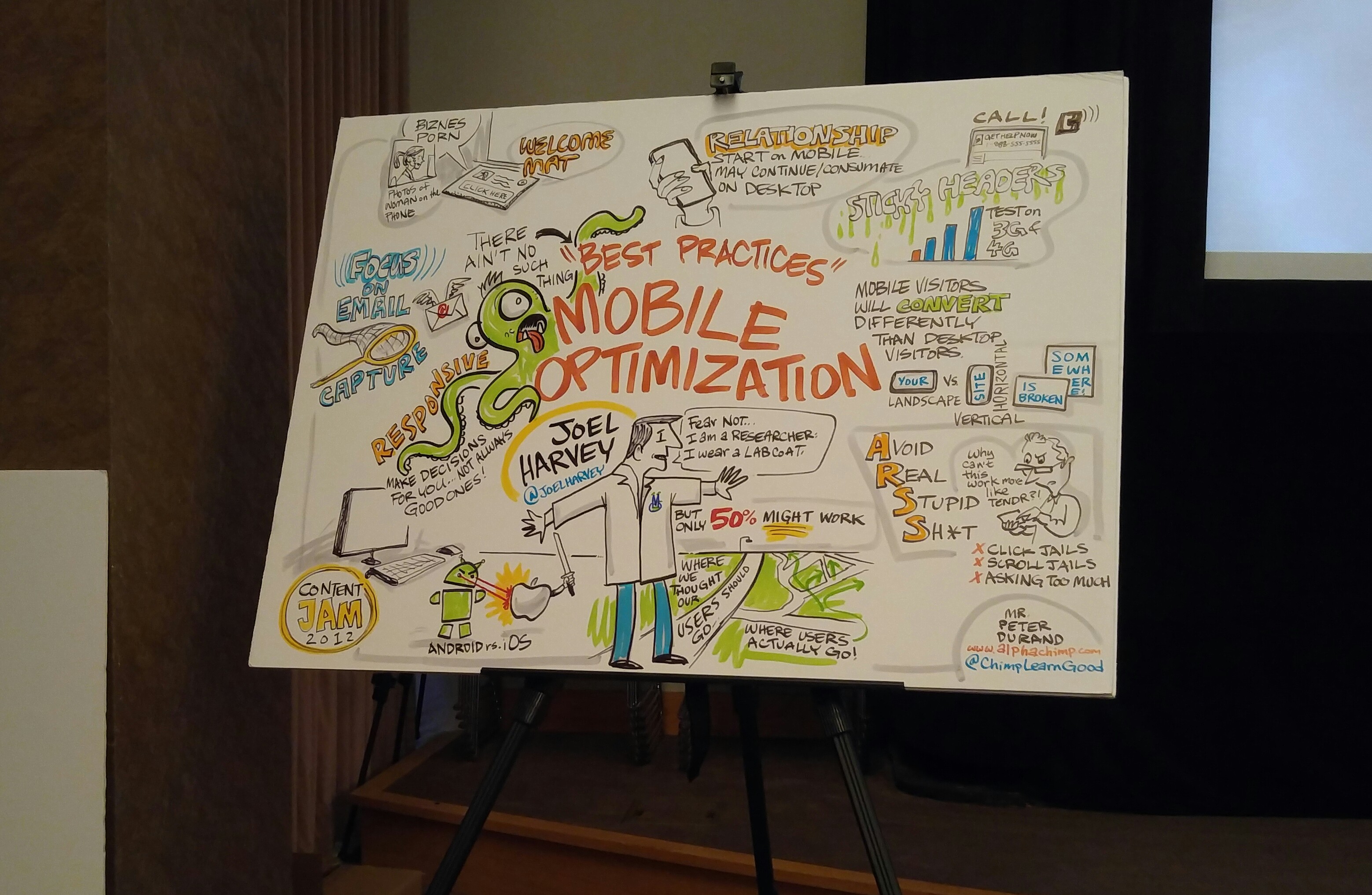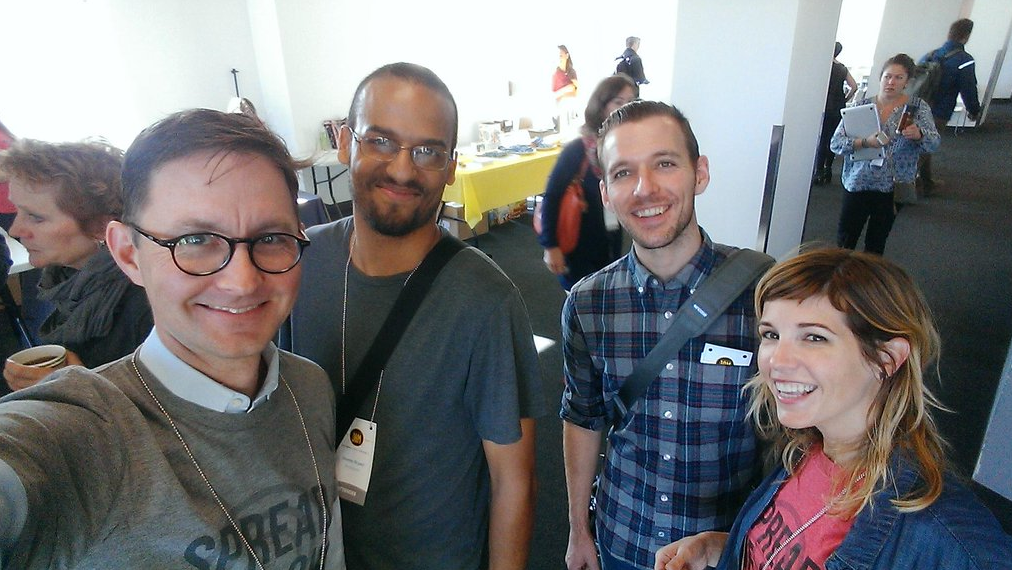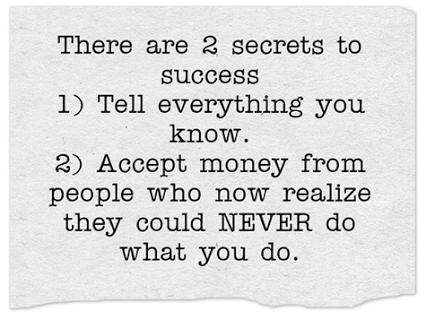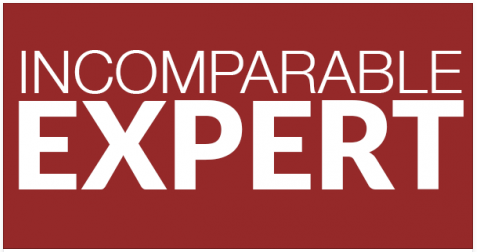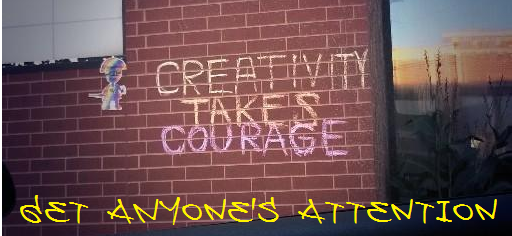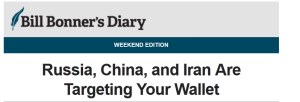I’m still cleaning up the mess after having my mind blown at Content Jam last month. But it’s a good mess. Besides expanding my thinking and learning some new tricks and strategies, I’ve already taken some action to step up my content marketing game. A couple of my clients have benefited from the tips I picked up, too.
Plus, I met some super-cool people. (That’s what happens when you come out of the cave and meet with other smart, creative people in real life.)
If you couldn’t make it to Chicago, you missed out BIG TIME.
Never fear! After the conference, I reached out to each of the rockstar speakers and asked them to boil down their presentations into bite-sized takeaways for anyone who couldn’t make it.
Here’s what they shared with me:
If you had 60 seconds or less, what’s the #1 takeaway from your presentation you’d share with anyone who couldn’t make it to Content Jam?
Tim Ash, about “Context and the Power of Framing – Biasing Your Offer with Irrational Neuromarketing”
The brain is the real ‘operating system’ for marketing. Understanding the evolution of it, as well as the strong and often irrational built-in biases will help online marketers a lot more than focusing on the latest technologies.
Note: All the “graphic recordings” in this post were created by Alphachimp.
You can see Tim’s full presentation on Orbit Media Studio’s YouTube channel here. As a bonus, I heckled Tim from the audience right around the 10:00 mark. To get the context, start paying attention at 9:22. Yep, that interruption is me.
Tim handled it like a pro. Threats of physical violence were made, but we were able to reconcile after the session.
Angie Schottmuller on “Holy Grail of On-Page Content Optimization”
“You can’t optimize what you don’t measure.” Jumping into content updates without data-driven insights is time consuming and foolish. The “holy grail” event tracking approach replaces guesswork with strategic wisdom for content optimization that confidently drives measurable results.
Check out Angie’s slides on Slideshare and watch the presentation in its entirety here.
Nancy Goldstein, about her presentation “The Creative Brief: The Secret Ingredient That Will Make All Your Content More Powerful and Effective”
Creative briefs are critical. You have to make absolutely sure that everyone who has accountability for content – strategy, implementation, or approvals – is in agreement about how the execution is going to deliver on the strategy. The only way to do that is to get it on paper and have a conversation about it. If you skip this step, you risk going through round after round after round of creative approvals, debates, and frustrations.
You can find the slides from Nancy’s presentation on her Slideshare page.
Amy Schmittauer on “How to Develop and Execute an Effective YouTube Strategy”
Do not waste any time. When your perfect viewer stumbles upon your content because they wanted to discover more about a topic you’re covering, the worst thing you can do it make them wait for you to get to the point. The more time at the beginning of a video with extra stuff YOU think is is important are precious moments wasted that you could be proving to your viewer that you are the resource they need to stay subscribed to for the long-term.
Watch Amy’s presentation in full on here.
Mana Ionescu speaking about her “Guide to Results-Driven Email Marketing and Automation”
Stop worrying about making emails pretty and start thinking of how to make them quick to read and easy to click on mobile devices. Shorten paragraphs (have an average of one link per 8-12 words), increase font size and increase size of links and calls to action so it’s easy to tap them with your fingertip.
You can check out the slides from Mana’s presentation on Lightspan Digital’s Slideshare page.
Jeannie Walters on how to “Become Your Company’s Customer Experience Investigator™”
Understand your customer’s entire journey to improve how your content is relevant to them. Think about your customer on his or her worst day, struggling with whatever product or service you offer, and understand your brand is not what they think about 24/7. Make sure your content strategy supports their true goals. It’s not just about who they are, it’s about where they are in their journey with your brand.
Check out this video of Jeannie talking about customer experience
Andy Crestodina, speaking about “Fortune and Glory: How to Make Friends, Rank High and Get Famous”
Social media isn’t just about sharing links and hoping for clicks. It’s not about counting likes and favorites. These things are nice, but they don’t help your marketing very much at all. Maybe you’ve noticed.
Yes, social media CAN drive traffic, but the quality of that traffic tends to be low. So the DIRECT benefits of social media are often very small.
So try this: focus on the INDIRECT benefits of social media. If you use it to build relationships, the value of those relationships are often huge.
- Use social media search tools to find very specific content creators in your niche
- Follow them, read what they write, get to know them
- Interact with them within their content, in comments and through sharing
- Connect with them on multiple social networks, keep interacting
- Offer to COLLABORATE with them, pulling their voice into your content
- Take the conversation offline, coffee, phone calls, handwritten thank you notes, etc.
What happens next is often magical. If you great something high value and email it to them, or if you create something together that is truly original, they’re extremely likely to share it, or better yet, mention it (and link to it) from something they’re writing.
When this happens, you just got a search optimization benefit from social media. And it’s durable, increasing the likelihood that you’re content will rank forever after.
That’s an example of how social media affects SEO. It’s an indirect benefit, but very very powerful…
The recording of Andy’s keynote presentation can be found here. Side note: Andy’s presentation is what inspired me to write this post. Thanks Andy!
He also did a second presentation called “Applied Analytics: Insights and Actions from 12 Reports.” Click the title to watch the video.
Jill Pollack, on “Feeding the Beast: How to Keep Your Content Flowing, on Point and Endlessly Entertaining”
Focus on the details when telling a story.
There’s nothing worse than having to listen to generalities and jargon about the state of Internet marketing across the global platform and the influx of impactful and non-impactful content that reaches multiple demographics including those in the 24-35 age range when searches are conducted with an unmet expected outcome.
BOO!
How about saying: “There’s nothing worse than searching for history of Thanksgiving and winding up with ads and fake listicles about pilgrims and Black Friday sales.”
(Also, “impactful” is not really a word!)
You can watch Jill’s fantastic talk here.
Susan Silver, from her presentation “Great Content Starts Here: Positioning is More Than a Statement”
Before you write a single word of content, you need to take the time to stop and think hard about your company or product’s very specific value proposition. You need to be able to succinctly and clearly answer five questions in layman’s terms:
1. Who is your primary target
2. What is the unmet need your target has that you fill
3. What is your competitive set
4. What is your unique point of difference
5. What are three real, no BS reasons that your point of difference is believable
Make sure to check out Susan’s presentation slides on Slideshare here.
Keidra Chaney’s advice on “How to Start (and maintain!) a Blog That Doesn’t Stink”
Be thoughtful and intentional when it comes to thinking about your blog. Think more about providing meaningful conversation, cutting through the clutter of content that’s already out there, by providing a perspective that you can give.
James Ellis speaking about his “13 Non-Obvious Content Promotion Tricks”
Content that you promote is wasted content, so you need to build systems that force you to promote your content. They don’t have to cost you a thing, but if you treat promotion as a “oh yeah, I guess I have to” add-on to content instead of an integral process, no one will ever hear your message.
You can see the slides from James’ talk on his Slideshare page.
Joel Harvey doing his best to encapsulate “Mobile Optimization Essentials: Tips for Increasing Mobile Conversion Rates” in 60 seconds
“You should never just make changes to your site without testing them. If you can’t or won’t A/B test the changes, at least make sure you have a rigorous, data-centric methodology for doing a pre-post analysis to assess the impact of any changes you make. Beyond that, I would encourage everyone to think deeply about what kind of goals they should optimize their mobile site for. What are the questions that people at the top of the decision making funnel will be asking? Identify those questions and make sure your mobile site answers them quickly and clearly.”
Watch Joel’s whole presentation on Orbit’s YouTube channel here.
My Content Jam Regrets
- I wish I had taken more pictures!
- It would have been great to have a clone so I could have attended all the breakout sessions. Choosing whose presentation to attend and whose to miss was BRUTAL. (Thank God for these 60-second recaps!)
- Not writing this round-up article sooner.
- Not being more purposeful in connecting with the other brilliant attendees.
Content Jam 2015 was incredible. I took 17 pages of notes, filled with great ideas and insights that will benefit my business in a major way. If you didn’t make it, I hope this post gives you a little taste of what you missed.
I also hope you’ll start following the speakers who’s advice you read above. Each of them will help you sharpen your content marketing “axe” to make you more effective at your craft.
Oh, and I hope to you see you Content Jam 2016!


